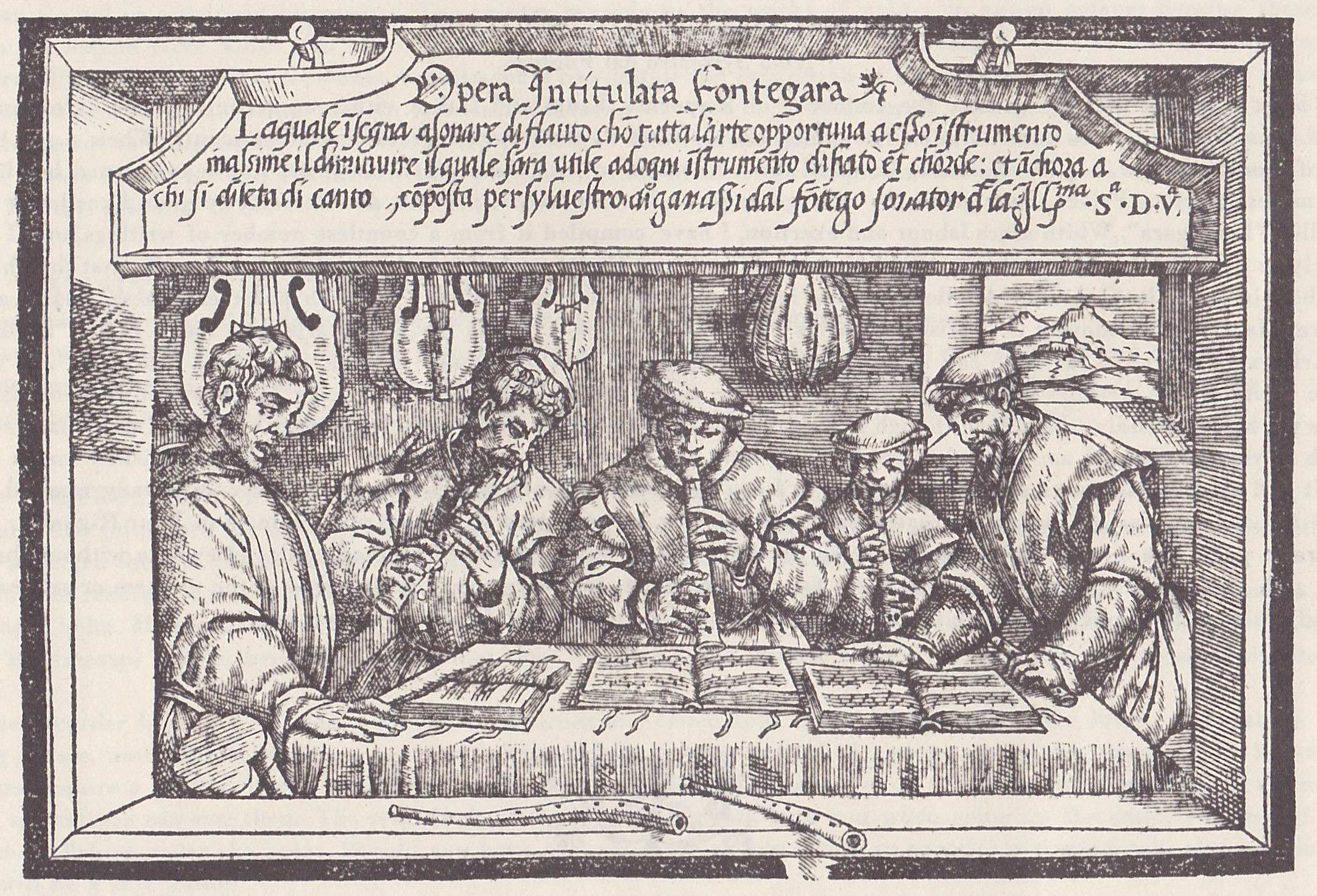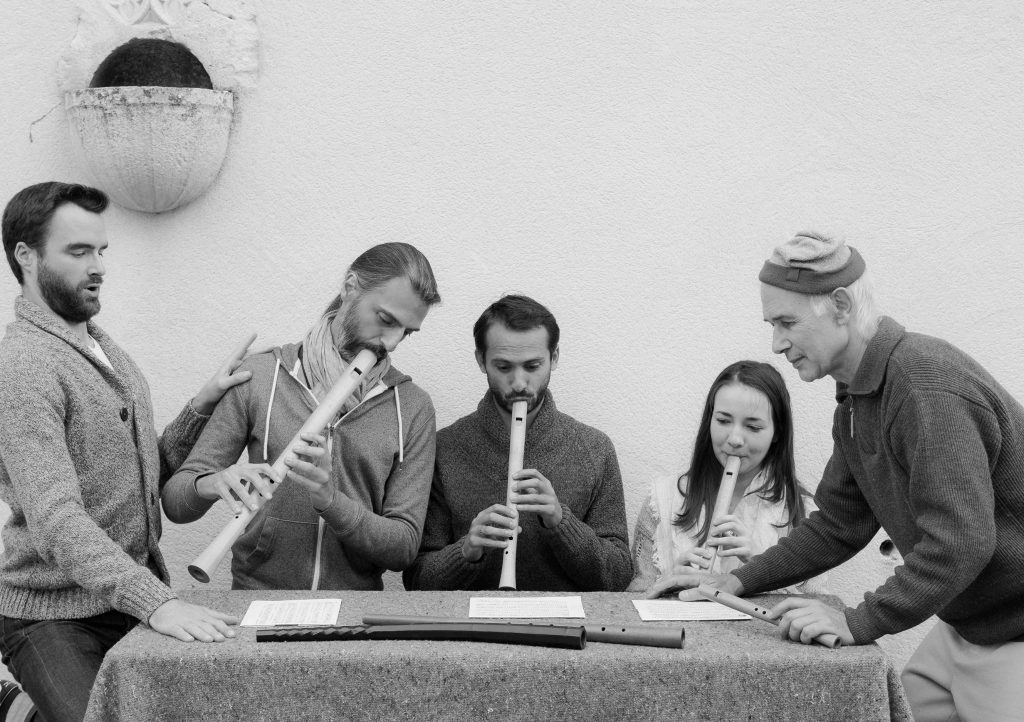Silvestro Ganassi del Fontego and the art of renaissance diminution
I would like to share with you a fascinating and highly illuminating presentation that explores the role of diminution (division) in renaissance polyphony of the 16th century. It focuses on the extensive tabulations of figures with which to fill in the silences in the intervals between successive notes in both solo and consort lines systematised in Silvestro Ganassi’s La Fontegara (1535), the first treatise on playing the recorder (or indeed any musical instrument).
Both the following presentation by cornetto and recorder player William Dongois (in French with English captions) and an illustrative concert (41 minutes) can be accessed below.
If you do no more, listen to this intriguing concert: it will enhance your enjoyment and appreciation of this familiar and yet so unfamiliar repertoire when brought back to life by “playing with history”.
Silvestro Ganassi del Fontego was a Venetian musician and author of two important treatises on instrumental technique: Opera intitulata Fontegara (1535) for the recorder, and Regola Rubertina (1542) and Lettione Seconda (1543) for the viola da gamba. He worked as court musician to the Doge of Venice, Andrea Gritti, to whom Fontegara is dedicated, but also as a member of an independent company of instrumentalists formed completely or in part by family members, as a virtuoso of the viola da gamba and lute engaged in the ridotti promoted by the noblemen and intellectuals of the city, and as a teacher of music. In addition to all this, he also successfully practiced the art of painting. Ganassi was born in Fontego (1492) and died after 1571, probably in Venice.
If you wish to deepen your acquaintance with renaissance embellishment, virtuoso recorder player, improviser, teacher and researcher Vicente Parrilla has recently launched his online Fontegara: A Working Kit (2021) which contains a wealth of materials to assist you.
Amongst Vicente’s own offerings is his stunning improvisation with More Hispano, complete with a transcription performed live in Warsaw in 2014.
References
- Dongois, William. 2018. L’énigme Ganassi (HEM): diminutions et proportions dans « la Fontegara » de Silvestro Ganassi, pratique ou spéculation? [The Ganassi enigma (HEM): Diminutions and proportions in Silvestro Ganassi’s “La Fontegara”, practice or speculation.] YouTube: https://youtu.be/_8uzWwQfDc4.
- Dongois, William et al. (2018) Concert à la Scuola Grande di San Rocco, Venise, Septembre 2018. Silvestro Ganassi, le maitre du temps [Concert at the Scuola Grande di San Rocco, Venice, September 2018. Sivestro Ganassi, the master of time.] YouTube: https://youtu.be/guL5KJatPWk
- Ganassi, Silvestro. 1535. Opera intitulata Fontegara. La quale i[n]segna a sonare de flauto cho[n] tutta l’arte opportuna a esso i[n]strumento massime il diminuire il quale sarà utile ad ogni i[n]strumento di fiato et chorde: et a[n]chora a chi si dileta di canto. [Work Entitled “Fontegara”, which Instructs in Playing the Recorder with all the Proper Art of this Instrument, Especially the Creation of Diminutions that will be Useful for all Wind and String Instruments as well as Those who Practice Singing]. Venice: Silvestro Ganassi. IMSLP: https://imslp.org/wiki/Opera_Intitulata_Fontegara_(Ganassi,_Sylvestro)
- Lander, Nicholas S. 1996–2021. Recorder Home Page: Interpretation. Last accessed 17 July 2021. https://www.recorderhomepage.net/interpretation/
- Parrilla, Vicente. 2020. Renaissance improvised counterpoint on the recorder. On performing an unwritten repertoire. Recorder Magazine 40 (2): 49–52.
- Parrilla, Vicente. 2021. “Fontegara: A Working Kit.” https://vicenteparrilla.com/blog/fontegara-working-kit.
- Pasquale, Marco di. 2020. Silvestro Ganassi: a documented biography. Recercare 31/1-2 2019: 29–102.
Cite this article as: Nicholas S. Lander. 1996–2025. Recorder Home Page: Playing with History. Last accessed 16 December 2025. https://recorderhomepage.net/playing-with-history/

